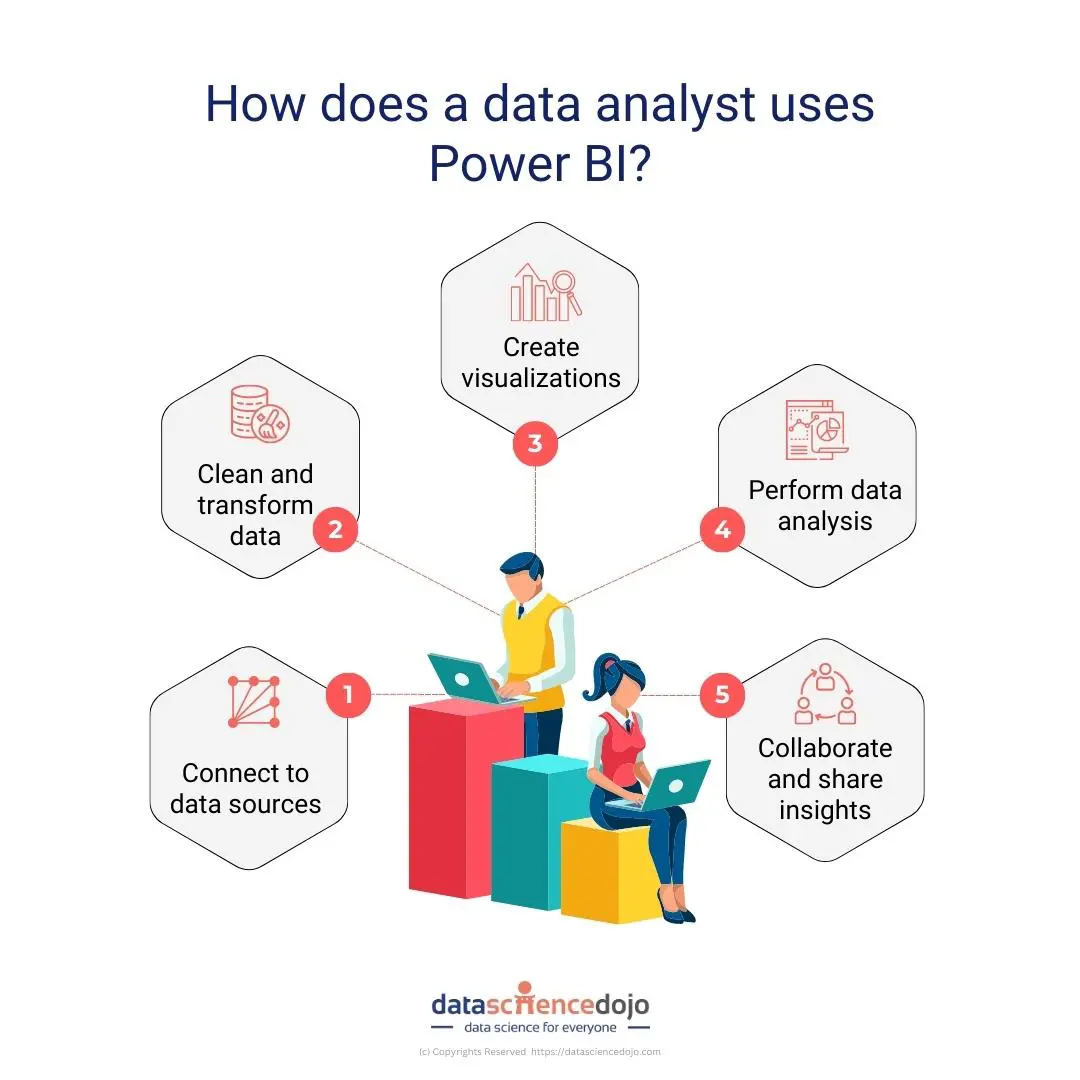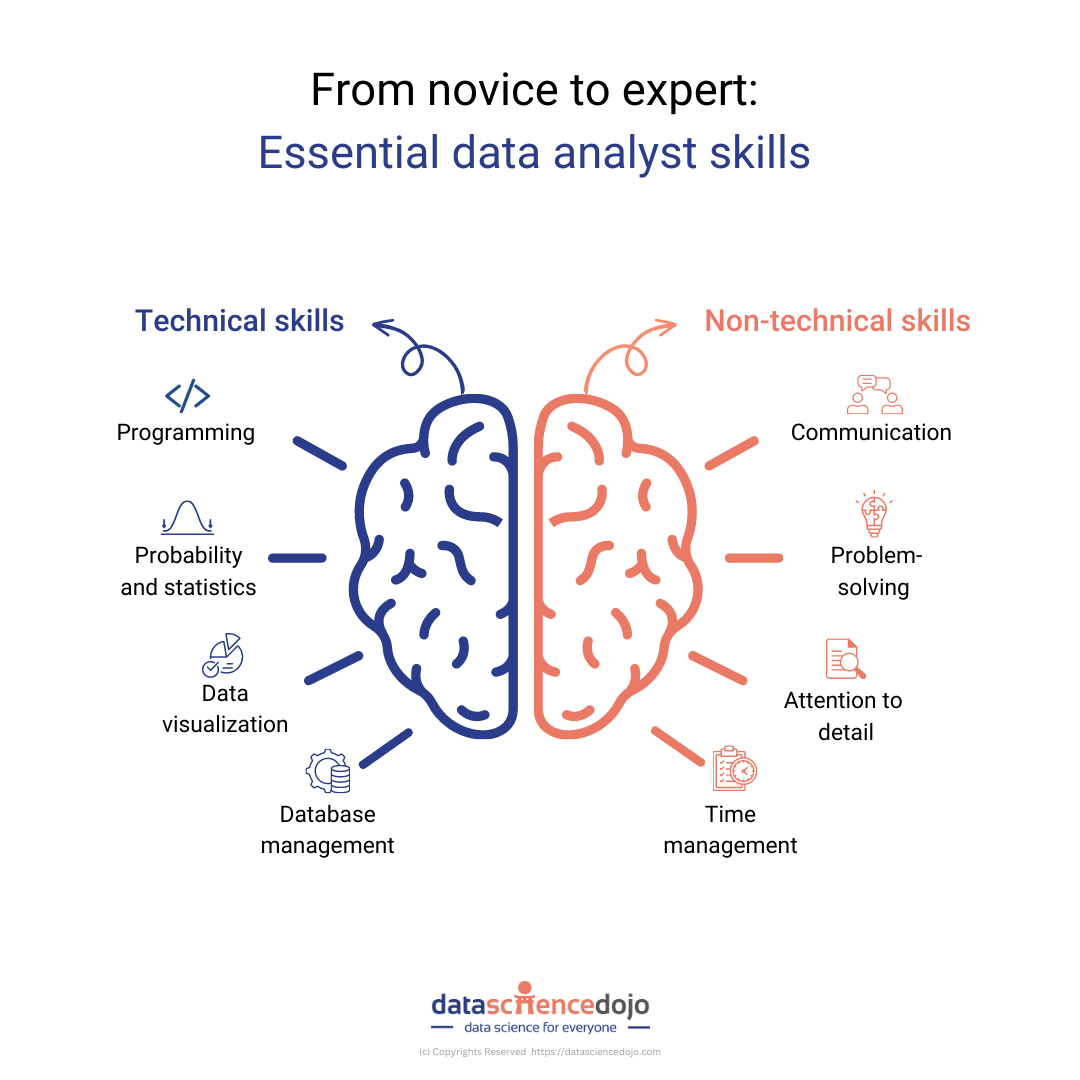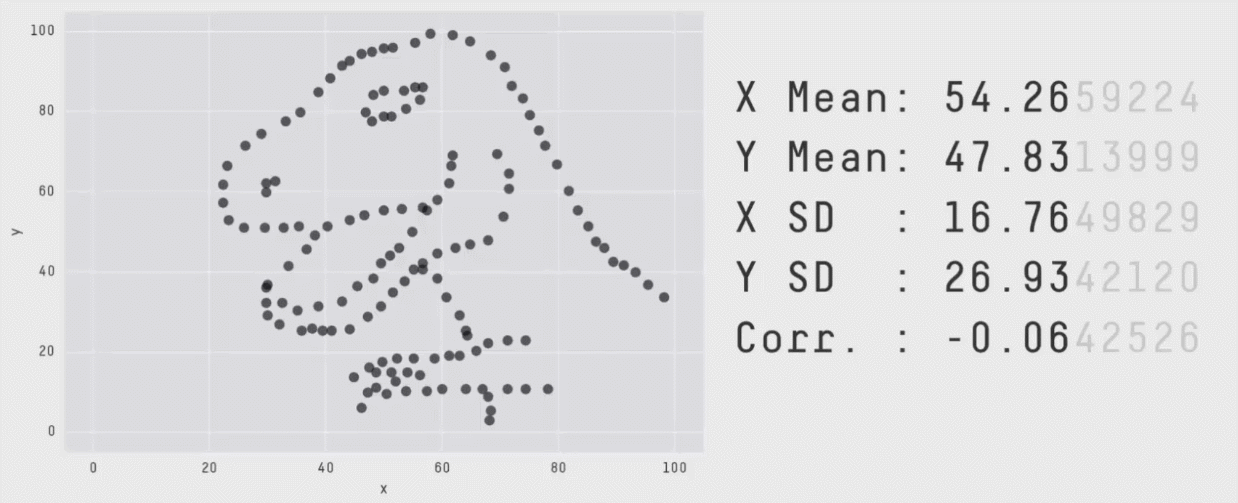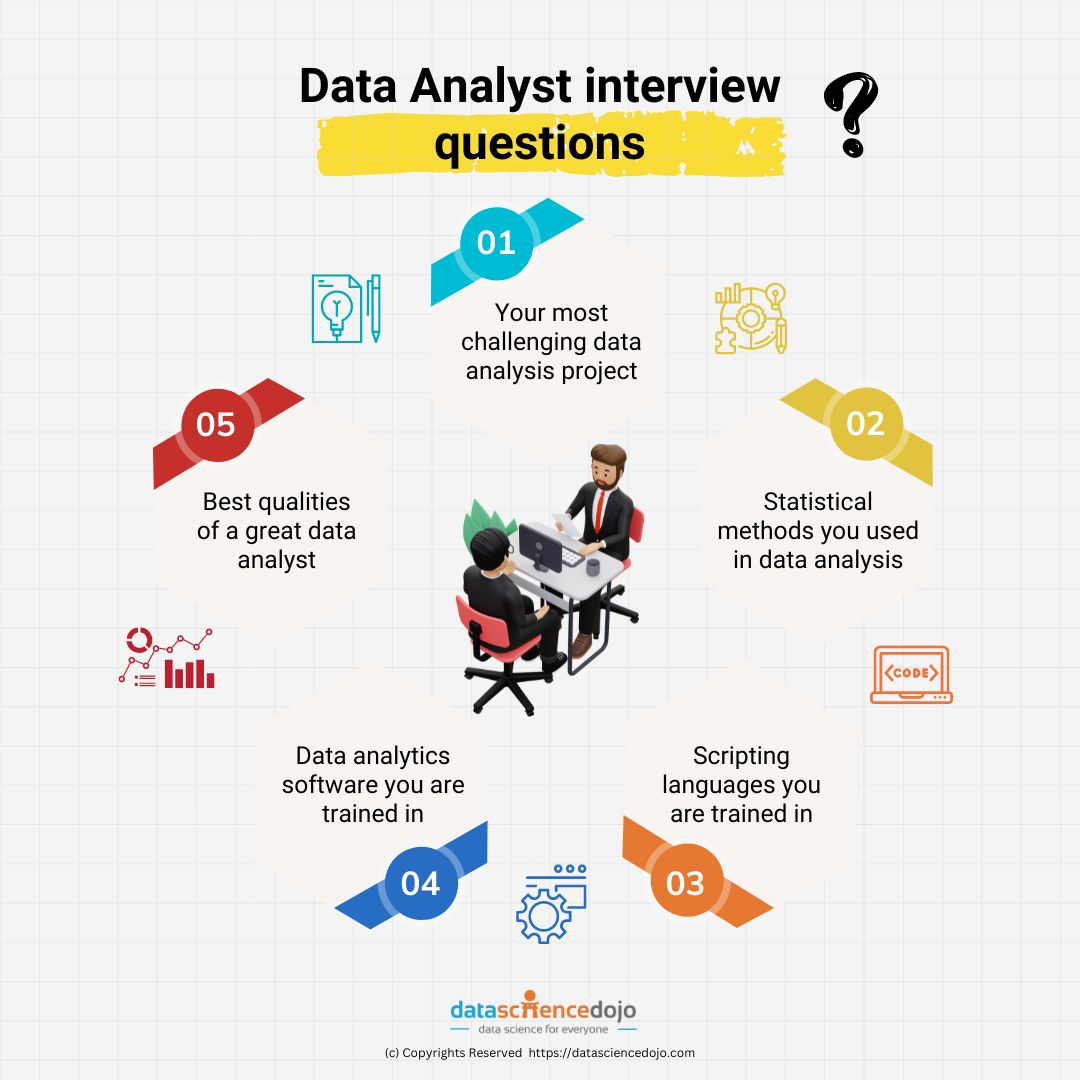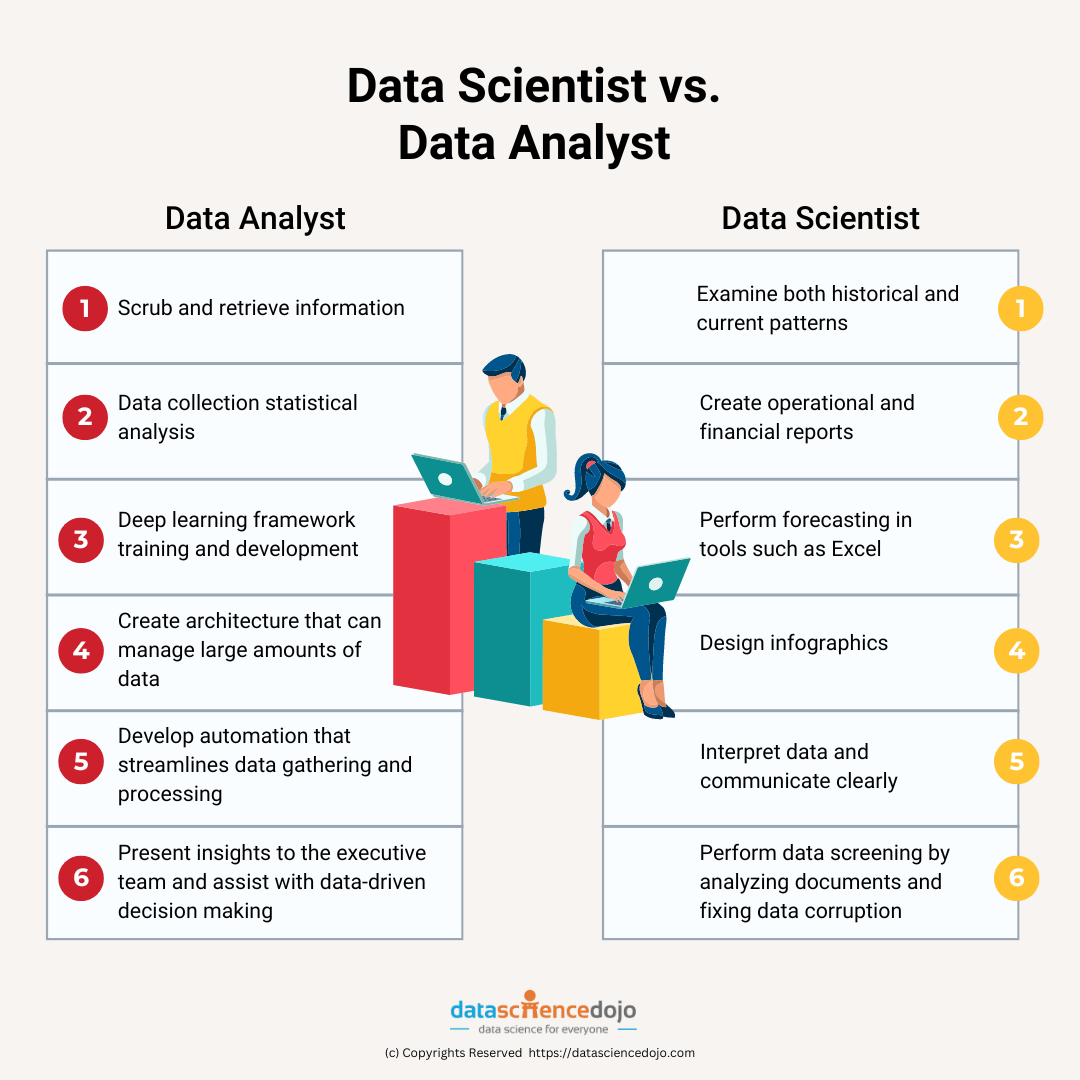Navigating the realm of data science careers is no longer a tedious task. In the current landscape, data science has emerged as the lifeblood of organizations seeking to gain a competitive edge. As the volume and complexity of data continue to surge, the demand for skilled professionals who can derive meaningful insights from this wealth of information has skyrocketed.
Enter the realm of data science careers—a domain that harnesses the power of advanced analytics, cutting-edge technologies, and domain expertise to unravel the untapped potential hidden within data.
Importance of Data Science in Today’s World
Data science is being used to solve complex problems, improve decision-making, and drive innovation in various fields. It has transformed the way organizations operate and compete, allowing them to make data-driven decisions that improve efficiency, productivity, and profitability. Moreover, the insights and knowledge extracted from data science are used to solve some of the world’s most pressing problems, including healthcare, climate change, and global inequality.
Top 10 Data Science Careers:
Below, we provide a list of the top data science careers along with their corresponding salary ranges:
1. Data Scientist
Data scientists are responsible for designing and implementing data models, analyzing and interpreting data, and communicating insights to stakeholders. They require strong programming skills, knowledge of statistical analysis, and expertise in machine learning.
Salary Trends – The average salary for data scientists ranges from $100,000 to $150,000 per year, with senior-level positions earning even higher salaries.
Read the most common Data Science interview questions and succeed as a data scientist today
2. Data Analyst
Data analysts are responsible for collecting, analyzing, and interpreting large sets of data to identify patterns and trends. They require strong analytical skills, knowledge of statistical analysis, and expertise in data visualization.
Salary Trends – Data analysts can expect an average salary range of $60,000 to $90,000 per year, depending on experience and industry.
3. Machine Learning Engineer
Machine learning engineers are responsible for designing and building machine learning systems. They require strong programming skills, expertise in machine learning algorithms, and knowledge of data processing.
Salary Trends – Salaries for machine learning engineers typically range from $100,000 to $150,000 per year, with highly experienced professionals earning salaries exceeding $200,000.
4. Business Intelligence Analyst
Business intelligence analysts are responsible for gathering and analyzing data to drive strategic decision-making. They require strong analytical skills, knowledge of data modeling, and expertise in business intelligence tools.
Salary Trends – The average salary for business intelligence analysts falls within the range of $70,000 to $100,000 per year.
5. Data Engineer
Data engineers are responsible for building, maintaining, and optimizing data infrastructures. They require strong programming skills, expertise in data processing, and knowledge of database management.
Salary Trends – Data engineers can earn salaries ranging from $90,000 to $130,000 per year, depending on their experience and the location of the job.
6. Data Architect
Data architects are responsible for designing and implementing data architectures that support business objectives. They require strong database management skills, expertise in data modeling, and knowledge of database design.
Salary Trends – The average salary for data architects is between $100,000 and $150,000 per year, although experienced professionals can earn higher salaries.
7. Database Administrator
Database administrators are responsible for managing and maintaining databases, ensuring their security and integrity. They require strong database management skills, expertise in data modeling, and knowledge of database design.
Salary Trends – Salaries for database administrators typically range from $80,000 to $120,000 per year, with variations based on experience and location.
8. Statistician
Statisticians are responsible for designing and conducting experiments to collect data, analyzing and interpreting data, and communicating insights to stakeholders. They require strong statistical skills, knowledge of statistical analysis, and expertise in data visualization.
Salary Trends – Statisticians can earn salaries ranging from $70,000 to $120,000 per year, depending on their experience and the industry they work in.
9. Software Engineer
Software engineering is a closely related discipline to data science, although software engineers focus primarily on designing, developing, and maintaining software applications and systems.
In the context of data science, software engineers play a crucial role in creating robust and efficient software tools that facilitate data scientists’ work. They collaborate with data scientists to ensure that the software meets their needs and supports their data analysis and modeling tasks.
Additionally, data scientists who possess a knack for creating data models and have a strong software engineering background may transition into software engineering roles within the data science field.
Salary Trends – The salary range for software engineers working in the data science field is similar to that of data scientists, with average salaries falling between $100,000 and $150,000 per year.
10. Analytics Manager
Analytics managers are responsible for leading data science teams, setting objectives and priorities, and communicating insights to stakeholders. They require strong leadership skills, knowledge of data modeling, and expertise in data visualization.
Salary Trends – Salaries for analytics managers vary significantly based on the size and location of the company, but the average range is typically between $100,000 and $150,000 per year, with some senior-level positions earning higher salaries.
Essential Skills for Success in the Data Science Workforce
Data science careers demand a unique combination of technical acumen, analytical prowess, and domain expertise. To embark on a successful career in data science, aspiring professionals must cultivate a robust skillset and acquire the necessary qualifications to navigate the intricacies of this rapidly evolving domain. Here, we outline the essential skills and qualifications that pave way for data science careers:
Proficiency in Programming Languages – Mastery of programming languages such as Python, R, and SQL forms the foundation of a data scientist’s toolkit.
Statistical analysis and mathematics – Strong analytical skills, coupled with a solid understanding of statistical concepts and mathematics, are essential for extracting insights from complex datasets.
Machine learning and data mining – A deep understanding of machine learning algorithms and data mining techniques equips professionals to develop predictive models, identify patterns, and derive actionable insights from diverse datasets.
Data Wrangling and manipulation – Skills in data extraction, transformation, and loading (ETL), as well as data preprocessing techniques, empower data scientists to handle missing values, handle outliers, and harmonize disparate data sources.
Domain knowledge – Understanding the nuances and context of the industry allows professionals to ask relevant questions, identify meaningful variables, and generate actionable insights that drive business outcomes.
Data visualization and communication – Proficiency in data visualization tools and techniques, coupled with strong storytelling capabilities, enables professionals to convey findings in a compelling and easily understandable manner to both technical and non-technical stakeholders.
Sneak-Peek into the Future
In conclusion, the field of data science is constantly evolving and presents numerous opportunities for those interested in pursuing a career in this field. With the right skills and expertise, data scientists can unlock the power of data and drive meaningful insights that can lead to transformative innovations. As the demand for data science careers continues to grow, staying up-to-date with the latest trends and technologies will be essential for success in this field. With a passion for learning and a commitment to excellence, anyone can thrive in the dynamic and exciting world of data science.





